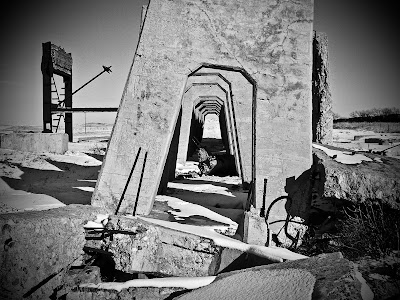Exploring Abandoned History With Jake
"Because every place left abandoned has a story to tell!"
Search This Blog
Friday, August 17, 2018
To everyone
Hello, everyone, I apologize it has been so long since I have posted anything. I had to take a break with school getting crazy. Stay tuned because there are a lot of adventures I have to write about coming your way!
Monday, April 30, 2018
Urban exploring trip Sneak Peek!!!
Here is a sneak peek at what is coming soon! Here are the ruins of....... Stay tuned to find out the story behid this place!!
Sunday, April 29, 2018
Exploring Trip #8 Antioch, NE
Nebraska is a land of untold tales. I found another amazing abandoned place. This one’s history is more unique than any other place I’ve explored. Each time I explore a new place, it becomes another exciting adventure.
This is the story of a booming business town in Nebraska: the little town of Antioch located in Sheridan County. In less than a year later, it went from being a sleepy little town to becoming the leading potash producer in the world! Antioch was very small. During this time there was a church, schoolhouse, a store, and homes.
There were many fights between companies who were trying to obtain the rights to lakes nearby. At the peak of the town, the potash production reached 100 tons of product per day. Due to all the factories, Antioch became a business town. This led to the addition of company stores and houses to accommodate over 2,000 new workers.
This is the story of a booming business town in Nebraska: the little town of Antioch located in Sheridan County. In less than a year later, it went from being a sleepy little town to becoming the leading potash producer in the world! Antioch was very small. During this time there was a church, schoolhouse, a store, and homes.
Potash is used in many things from fertilizers, fire extinguishers, textiles, medicine and other uses. Potash is also known as the water-soluble form of potassium. It is mined and mixed with manufactured salts. Potash can be produced in a few different ways. It can be found in deposits left behind by ancient seas. Which Nebraska is known for being located underneath an ancient sea at one time. The other method was to burn wood until it became boiling. The resulting lye left over is the potash.
Things started to change for the town when two chemistry students from the University of Nebraska at Lincoln found a way to extract potash from the alkaline lakes located in the sand hills which Antioch rests upon. Potash became a massive industry in North America between the late 1700s and early 1800s.
When WWI started Antioch got it’s moment to shine. Most of the U.S. potash trade came from Germany at this time. During WWI we were fighting with Germany and that meant our potash inventory ran out. As a result, Antioch became the leading producer of potash in the world. When the year 1918 rolled around, Antioch had five potash plants operating around or in the town.
After WWI ended, things started to decline for Antioch. The U.S. resumed trade with Germany and regained their original supplier because it was cheaper to import than to manufacture it in Nebraska. It took just a few short years for the potash plants to go from employing much of the area to being out of business altogether. The ruins of Antioch were placed on the national register of historic places in 1979. What remains is the two separate sites with ruins of the potash plants of Antioch.
When I traveled to Antioch, I found myself once again feeling alive. That is because the most beautiful things in life are not associated with money. They are the memories and moments we treasure. If you don't make those amazing experiences for yourself they will pass you by.
If you are enjoying my stories feel free to enter your email and press the follow button so you can stay up to date on my stories. Thanks for reading stay tuned for more.
If you are enjoying my stories feel free to enter your email and press the follow button so you can stay up to date on my stories. Thanks for reading stay tuned for more.
Subscribe to:
Comments (Atom)















